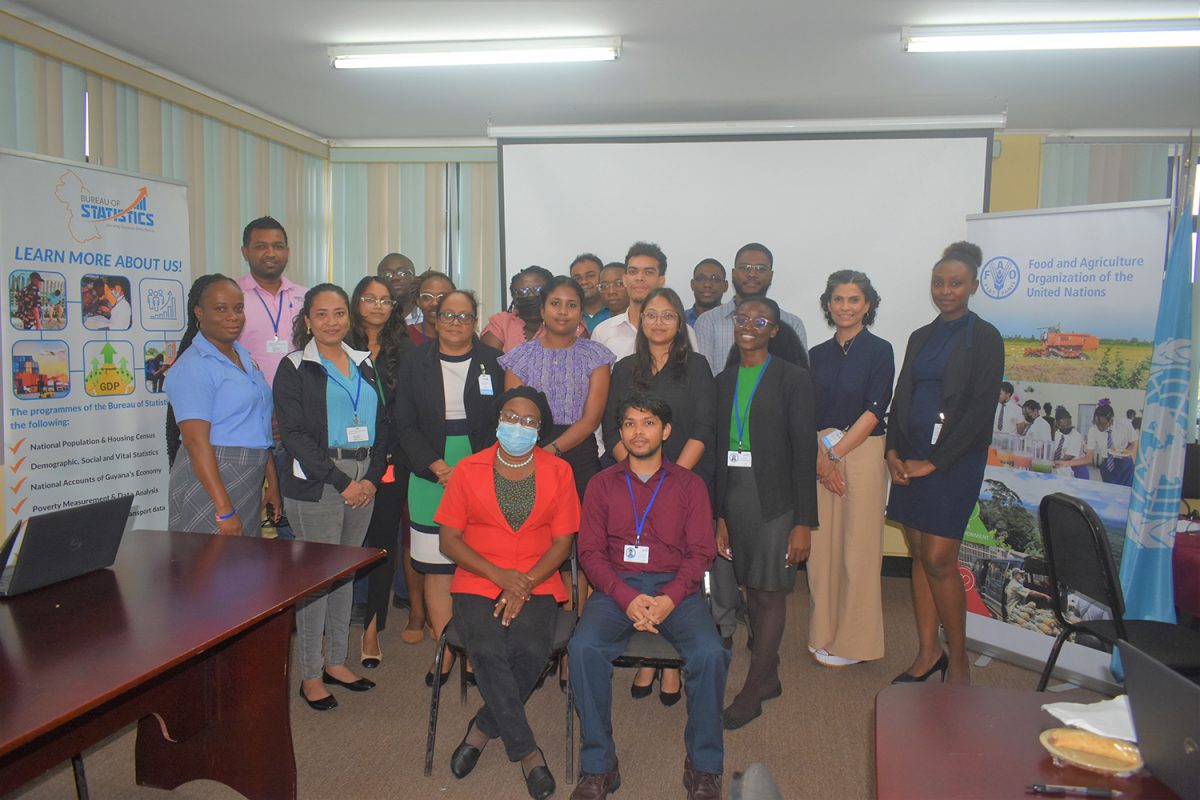Twenty-nine persons from the Bureau of Statistics, Ministry of Finance and Ministry of Agriculture recently participated in a training exercise to measure the severity of food insecurity at the household and/or individual level in a given population.
The Bureau’s data was used in partnership with the Food and Agriculture Organization (FAO) using the FAO’s developed Food Insecurity Experience Scale (FIES) analytical tool. The exercise was hosted at the Bureau’s Head Office in Georgetown, June 20-22, 2023.
Facilitated by the FAO, the capacity building exercise provided participants with a comprehensive understanding of the FIES and SDG Indicator 2.1.2 analysis, including methodologies, data collection techniques, and interpretation, a release yesterday from the Bureau of Statistics said.
Personnel were trained to utilize these tools to assess food insecurity at various levels and identify vulnerable populations, which will support evidence-based policies and interventions to combat hunger. The overarching objective of the training was to introduce the FIES analytic protocol, especially to calculate the prevalence of moderate-severe and severe food insecurity in the context of the Rasch model.
The FIES methodology was also presented, as well as the relevance of the information it provides for food security policy. FIES, which is computed using eight questions about experiences related to lack of access to food, was incorporated by the Bureau in its Labour Force Survey (LFS) in April 2022 and the FAO supported the agency with training and data analysis geared towards estimating the prevalence of food insecurity in Guyana. The LFS’s conclusions would enhance the Bureau’s capability for reporting on Guyana’s progress towards achieving Sustainable Development Goal number 2 which speaks to ending hunger by 2030.
Chief Statistician, Errol La Cruz, emphasized the importance of data collection and analysis and the use of FIES and other tools, to enhance monitoring and reporting on the SDGs. He noted that through reporting and analysis on Indicator 2.1.2, targeted solutions can be developed towards eradicating hunger by 2030.




